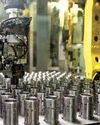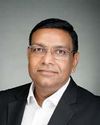
THE WORLD BANK ESTIMATES that about 4.2 billion people, or 55 per cent of the world’s population, live in the cities. By 2050, this number will rise to 70 per cent. Urbanisation is often seen as inevitable when a country transforms from a ‘traditional society’ to one which is geared toward ‘high mass consumption’. These familiar terms are the first and last ‘stages of economic growth’ propounded by Walt Whitman Rostow.
Often, urbanisation is also correlated with economic development. The proof of the pudding is in the eating. Already, 80 per cent of global GDP is generated in cities. There exists a positive correlation between the higher GDP per capita income and urban population (as a percentage of the total population).
The level of the urban population in countries like Switzerland (73.92 per cent), Norway (82.97 per cent), US (82.66 per cent), Denmark (88.12 per cent), Sweden (87.98 per cent), Australia (86.24 per cent) and Canada (81.56 per cent) is significantly high.
Conversely, countries with lower levels of GDP per capita have lower levels of urban population. Burundi (13.1 per cent urban population), South Sudan (20.20 per cent), Afghanistan (26.03 per cent), Rwanda (17.43 per cent), Ethiopia (21.70 per cent), Kenya (28 per cent) and Myanmar (31 per cent) are some examples.
Let us look at the case of India. The Union Ministry of Statistics and Programme Implementation (MoSPI) had in 2019 estimated urban and rural per capita income in terms of Net Value Added (NVA) to be Rs 98,435 in urban areas and Rs 40,925 in rural areas, respectively. It is more than double in urban areas.
This story is from the {{IssueName}} edition of {{MagazineName}}.
Start your 7-day Magzter GOLD free trial to access thousands of curated premium stories, and 9,000+ magazines and newspapers.
Already a subscriber ? Sign In
This story is from the {{IssueName}} edition of {{MagazineName}}.
Start your 7-day Magzter GOLD free trial to access thousands of curated premium stories, and 9,000+ magazines and newspapers.
Already a subscriber? Sign In

MEMORIES & IMPRESSIONS
Ratan Tata was an exceptional human being. He was a visionary leader, esteemed industrialist, and a humanitarian, who left an indelible mark on India and the world.

The Robotaxi Market
The robotaxi market is shaping up to be a high-stakes battleground as tech giants and automakers race to transform urban mobility.

And the Nobel Prize Goes to AI
The recent Nobel Prize T awards to AI pioneers affiliated with Google have sparked a broader conversation about Big Tech's influence on research and the limitations of traditional prize categories.

Ola Electrified
Once considered a trailblazer in India’s electric vehicle (EV) ecosystem, Bhavish Aggarwal’s Ola Electric now faces a major accountability crisis.

Sharp Slide in Industrial Output on Eve of Deepavali
India’s index of industrial production (IIP) saw a sharp reversal in August, contracting by 0.1 per cent, in stark contrast to the 4.7 per cent growth in July, mostly because of significant contractions in mining and electricity generation.

Heralding the Solar Era with Sustainable Electrification
RAJEEV KASHYAP on the economics of solar power, the hurdles in scaling it, and much more

A WELL-GREASED MACHINE
The OmniBook X14 laptop runs on first-generation Snapdragon X Elite, which bets big on Al-enabled productivity and battery life, but falls short when it comes to overall experience, says Deep Majumdar

DO NOT LETA HEALTH CRISIS RUIN YOUR FINANCIAL HEALTH
For a family of four living in a metro, it is recommended to opt for a family floater health insurance plan with a sum insured of at least Rs 15-20 lakh

Disruption Ahead: Beyond Organisation Charts and Structures
ALBERT EINSTEIN FAMOUSLY said, “We cannot solve our problems with the same thinking we used when we created them.

Dr. Rahul Shivajirao Kadam: A Visionary Leader Blending Sustainability, Innovation, And Social Empowerment
We are on the stage of global warming, and these technologies not only help prevent further damage but also leave behind a better environment for future generations.